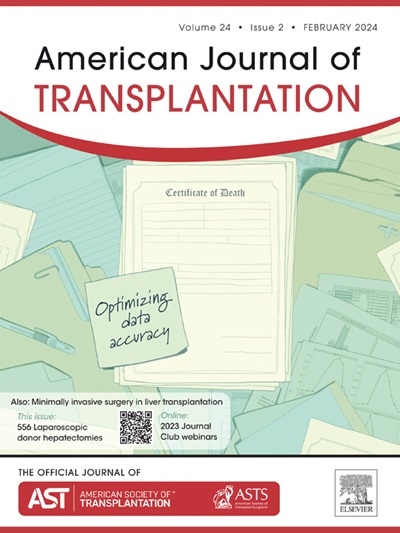Kidney Storage at Sub-Zero Temperature is Safe for Porcine Kidney Auto-Transplantation: A World First In-Vivo Study.
IF 8.2
2区 医学
Q1 SURGERY
引用次数: 0
Abstract
Organ shortage continues to limit kidney transplantation worldwide. Sub-zero storage may harbor the potential for extending cold ischemic times, improving organ sharing, and optimizing graft allocation. However, sub-zero storage remains challenging, limited by possible freeze-thaw damage. We conducted a porcine auto-transplant model to assess kidney function and injury after brief (5 h) or prolonged (24-48 h) sub-zero storage of grafts, comparing it to classic static cold storage. There was no mortality in the cohort, and subjects were followed for 7 days. Creatinine, BUN and potassium peak levels and curves were comparable between groups in both brief and prolonged experiments (P > .05). Histological analysis revealed no evidence suggesting ice crystals had formed, as well as similar injury profiles, suggesting that the sub-zero preservation process was successful. Creatinine clearance, fractional excretion of sodium, NGAL urinary and serum levels tended to favor sub-zero preservation in the 24 h SCS experiments, without statistical significance. While further research is needed to optimize storage protocols and explore the impact of colder temperatures, this study provides promising evidence regarding safety and feasibility of sub-zero storage as a method for extending preservation times. Future studies will focus on enhancing preservation solutions for improved outcomes.零下温度下的肾脏储存对猪肾脏自体移植是安全的:世界上第一个体内研究。
器官短缺继续限制着世界范围内的肾移植。低温储存可以延长冷缺血时间,改善器官共享,优化移植物分配。然而,零度以下的储存仍然具有挑战性,可能受到冻融损害的限制。我们建立了猪自体移植模型,以评估移植物在低温短时(5小时)或长时间(24-48小时)储存后的肾功能和损伤,并将其与经典的静态冷藏进行比较。该队列中无死亡病例,受试者随访7天。短时间和长时间试验组间肌酐、尿素氮和钾的峰值水平和曲线具有可比性(P < 0.05)。组织学分析显示,没有证据表明冰晶已经形成,以及类似的损伤特征,表明零度以下的保存过程是成功的。在24 h SCS实验中,肌酐清除率、钠排泄分数、尿和血清NGAL水平倾向于零度以下保存,但无统计学意义。虽然需要进一步的研究来优化储存方案并探索低温的影响,但这项研究为零下储存作为延长保存时间的方法的安全性和可行性提供了有希望的证据。未来的研究将集中于提高保存方法以改善结果。
本文章由计算机程序翻译,如有差异,请以英文原文为准。
求助全文
约1分钟内获得全文
求助全文
来源期刊
CiteScore
18.70
自引率
4.50%
发文量
346
审稿时长
26 days
期刊介绍:
The American Journal of Transplantation is a leading journal in the field of transplantation. It serves as a forum for debate and reassessment, an agent of change, and a major platform for promoting understanding, improving results, and advancing science. Published monthly, it provides an essential resource for researchers and clinicians worldwide.
The journal publishes original articles, case reports, invited reviews, letters to the editor, critical reviews, news features, consensus documents, and guidelines over 12 issues a year. It covers all major subject areas in transplantation, including thoracic (heart, lung), abdominal (kidney, liver, pancreas, islets), tissue and stem cell transplantation, organ and tissue donation and preservation, tissue injury, repair, inflammation, and aging, histocompatibility, drugs and pharmacology, graft survival, and prevention of graft dysfunction and failure. It also explores ethical and social issues in the field.

 求助内容:
求助内容: 应助结果提醒方式:
应助结果提醒方式:


